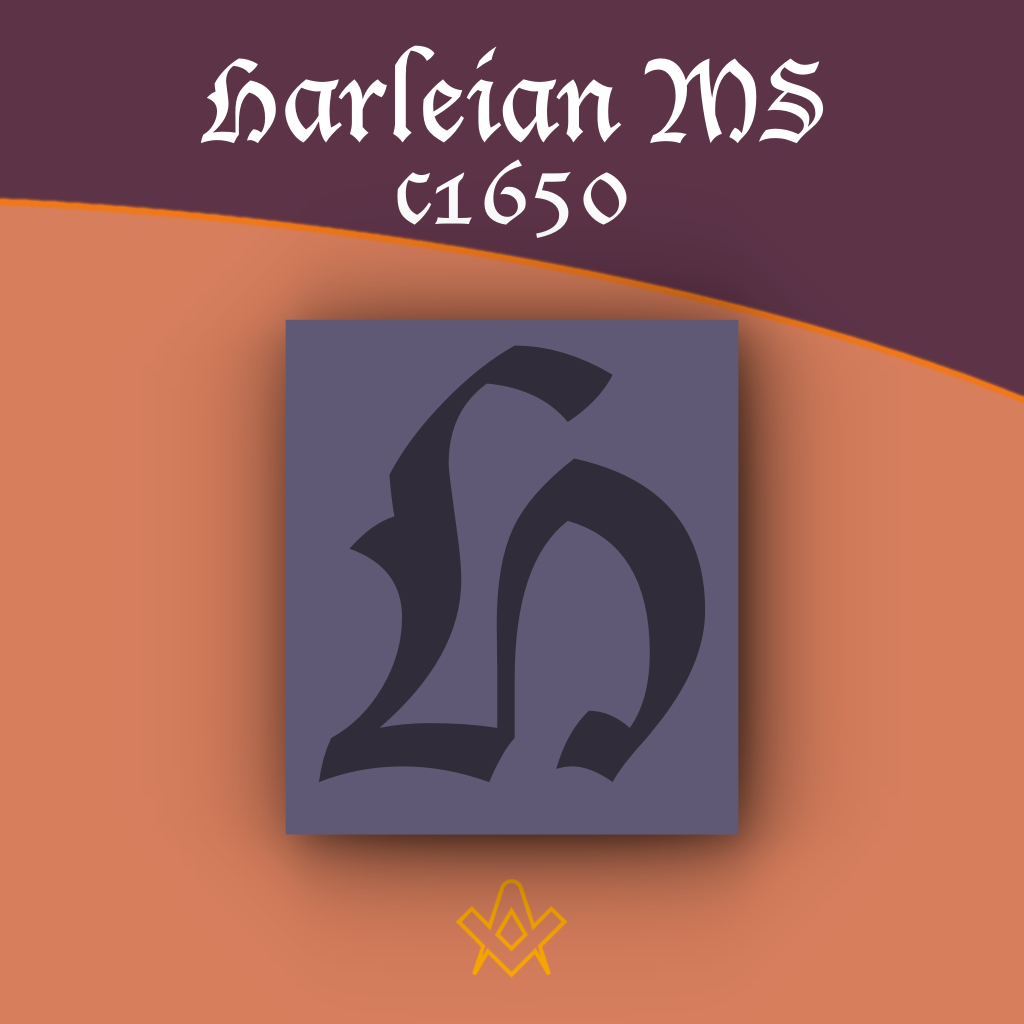There are two known ‘Harleian Manuscripts’ which allude to the earliest constitutions of Masonry. They are part of the Harleian Library (also known as the Harley – or Harleian – Collection) one of the ‘closed’ collections of the British Library in London, formerly the library of the British Museum.
The collection comprises 7,660 manuscripts, including 2,200 illuminated manuscripts, more than 14,000 original legal documents; and more than 500 rolls.
It was assembled by Robert Harley (1661–1724) and his son Edward (1689–1741).
In 1753, it was purchased for £10,000 by the British government. Together with the collections of Sir Robert Cotton (the Cotton library) and Hans Sloane (the Sloane library) it formed the basis of the British Museum’s collection of manuscripts, which were transferred to the new British Library in 1973.
The collection contains illuminated manuscripts spanning the early Middle Ages to the Renaissance.
There are important early British manuscripts, many from Western Europe, and several Byzantine manuscripts in Greek and other languages.
Source: Wikipedia
Both manuscripts are described in Gould’s History of Freemasonry Throughout the World, Volume I:
Harleian MS 1942 – 17th Century. British Museum.
An incomplete copy was published in the Freemasons’ Quarterly Review of 1836 (p. 288), by Henry Phillips (of the Moira Lodge, now No. 92).
Another transcript was printed in Hughan’s Old Charges. Bond (Freemasons’ Magazine, July 10, 1869), in reply to W. P. Buchan (of Glasgow), respecting the ages of the Masonic MSS. in the British Museum, stated that ” he could speak without any hesitation as to the general period of their date ” and he ascribed the present MS. to the “beginning of the seventeenth century”; the document next following in this series being, he considered, half a century later in point of time.
There cannot, however, be much difference between them as to the dates of transcription, but it is probable that No. 12 [Harleian MS 2054] was copied from a much older text.
There are only two versions of the Old Charges in the vast collection made towards the end of the seventeenth century by Robert Harley (afterwards Earl of Oxford and Mortimer), viz. in vols. 1942 and 20 j 4. The collection consisted of some 10,000 vols, of MSS. and more than 16,000 original rolls, charters, etc.
In the Catalogue Bibliotheca Harleiana of a.d. 1808, the number 1942 is thus described :
“A very thin book in 4to, wherein I find —
1. The harangue to be made at the admittance of a new member into the Society or Fellowship of the Freemasons ;
2. The articles to be observed by the several members of that Society ;
3. The new articles and form of the oath to be taken at admission. Whether this be a copie of that old book mentioned by Dr. Plot in his Staffordshire I cannot say.”
No. 11 [Harleian MS 1942] contains The Neiv Articles (26 to 31), which are not in any other known MS., also the “Apprentice Charge,” peculiar to a few versions only (the latter being entirely omitted by Phillips in his transcript of the MS.).
These two specialities and, particularly, the clauses 26 to 31, constitute a text of great importance…
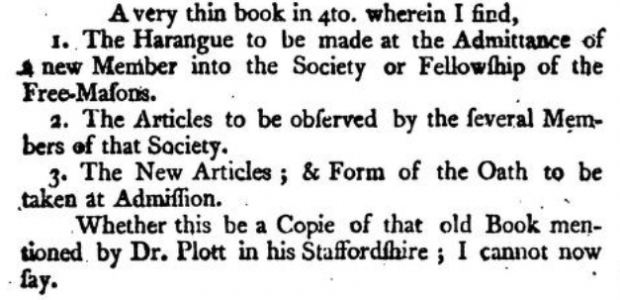
Image from BIBLIOTHECAE HARLEIANAE: A catalogue of the Harleian manuscripts, in the British Museum. With indexes of persons, places, and matters. British Museum, 1808
Gould’s History of Freemasonry Throughout the World,
Harleian Ms No. 2054, 17th century, held in the British Museum
Published in Hughan’s Masonic Sketches and Masonic Magazine, 1873. The official catalogue describes vol. 2054 as “A Book in folio consisting of many Tracts and loose papers by the second Randle Holme and others . . . and the third Randle Holme’s account of the Principal Matters contained in this Book.”
In it are ” Charters of the joyners, carvers and turners ; weavers, bakers, wrights, carpenters, slaters and sawyers ; beer brewers, mercers and ironmongers ; saddlers, drapers,” being various guilds or companies of Chester.
There is no original record of these in the British Museum, but the MSS. were transcribed by the second and third Randle Holme, sometimes dated and at other times not, from records, for the most part written, it is supposed, before 1600.
The Holmes of Chester were evidently enthusiastic students of heraldry, and three generations were represented in the persons of the grandfather, father and son — all bearing the Christian name of Randle — at the Herald’s Office, as deputy to the College of Arms for Cheshire and other counties.
The first Randle Holme died 1654-5, the second in 1649 an d tne third in 1699-1700 (born 1627).
The second Holme is stated to have died a.d. 1659, but, according to W. H. Rylands (Masonic Magazine, January 1882), his death occurred in 1649 ( J Charles II, i.e. computing the reign from the death of Charles I).
Now, if No. 1 2 is in the hand- writing of the third Randle Holme, clearly a.d. 1650 is quite early enough for the transcription, as it is believed to have been copied by that diligent antiquary.
The original, however, from which it was taken was evidently much older ; but, having classified the MSS. according to the periods of their transcription, rather than the presumed age of their original texts, in strictness this document should be numbered after No. 13, though, for the sake of convenience, the “Harleian” (11 and 12) have been coupled with the “Sloane” MSS. (13 and 14).
[Harleian 2054] is written on four leaves of paper, containing six and a half pages of close writing in a very cramped hand.
The water-mark is indistinct and undated. After the recital of the Old Charges, entitled the Freemasons’ Orders and Constitutions ‘, is a copy of a remarkable obligation to ” keep secret ” certain ” words and signes of a free mason,” etc. and likewise a register of the fees paid (varying from five shillings to twenty) ” for to be a free mason,” by twenty-seven persons whose names appear.
We have here the earliest known mention of words and signes (see Masonic Sketches, pt. 2, p. 46 and Masonic Magazine, January and February 1882).
As Hughan states, they are apparently not connected with the Old Charges, as forming an integral part of this version, though they were most probably used by one and the same body.
Masonic scholar William James Hughan, referenced by Gould (see above) wrote in The old charges of British Freemasons (1872):
HARLEIAN MS. BRITISH MUSEUM. A.D. 1670. (Vol. 1942)
This MS. contains the fullest information of any that we are aware of, and is of great value and importance in consequence.
The “New Articles” are not dated, and are peculiar to this MS., although they have been reprinted we believe, from this document several times from A.D. 1722.
In Roberts’ Edition of the Constitutions (which we consider to be a transcript of the Harl. MS. 1942) published A.D. 1722 ; the “New Articles” are said to have been agreed on, at a General Assembly, held on the eighth day of December, 1663, and in Dr. Anderson’s Constitutions of A.D. 1738, and later additions, they are declared to have been established at the ” Feast of St. John’s Day, 27th Dec, 1663,” under the Grand Mastership of the Earl of St. Albans.
No evidence has been found as yet for either of these statements, and the character of Dr. Anderson as an accurate Historian is certainly not improved, by his having unwarrantably Introduced a modern Title in the 5th clause, viz., “Grand Master;” which we need hardly state, is not in the original.
Bro. Henry Phillips, in the “Freemasons’ Quarterly Review” (A.D. 1836, p. 288) gave what was then considered a correct copy of MS. Vol. 1942, (Harl.) but on comparing it with a certified transcript, we find that the copyist has performed his task in a most indifferent manner, and actually left out the whole of the ” Apprentice Charge,” which, so far, has only been found in that MS., the York MS. A.D. 1693, the Hope MS. (N) and the printed copy of Roberts’ A.D. 1722.’
HARLEIAN MS., BRITISH MUSEUM, A.D. 1650.
(Vol. 2054, f.29 — by another calculation f. 33.)
The MS. is in the collection made towards the end of the seventeenth century by Mr. Robert Harley, (afterwards Earl of Oxford and Mortimer) which consisted of about 10,000 volumes of valuable manuscripts, and more than 16,000 original rolls, charters, &c. , the main tendency of which is to illustrate the history, laws, customs, and antiquities of England. There are but two complete MSS. relating to Freemasonry in all this vast Library.
The Vol. No. 2054 is in the hand-writing of Randle Holmes, Herald of Chester, who died A.D. 1659, and another of the same name who died A. D. 1 700. The contents mostly refer to charters and Constitutions of Chester Companies and Guilds of the seventeenth century.
The MS. consists of four leaves, containing six and a half pages of close writing in a very cramped hand. The ” water-mark ” is indistinct and bears no date. There are seven general, and eighteen special charges, as with the ” Sloane MSS.” It was printed in our “Masonic Sketches and Reprints,” (part 2, p. 42), and for the reasons mentioned under the heading Sloane MS. No. 3848, we have thought it undesirable to republish it.
The two following folios in the Volume (viz. – 33 and 34) are of a very valuable character inasmuch as the secrets of Free- masonry are referred to in the “obligation” taken by Initiates, and the sums are recorded which ” William Wade give to be a free-mason,” and others who were admitted members of the Lodge.
The amounts varied from five shillings to a pound, the majority being ten shillings and upwards.
The fragment on folio 33 is as follows, and was written about the same time as the MS. Constitutions: —
“There is severall words & signes of a free mason to be revelled to yu wch as yu will answr before God at the Great & terrible day of Judgmt yu keep secret & not to revaile the same in the heares of any person or to any but to the Mrs. & fellows of the said society of free masons so helpe me God, &c.”
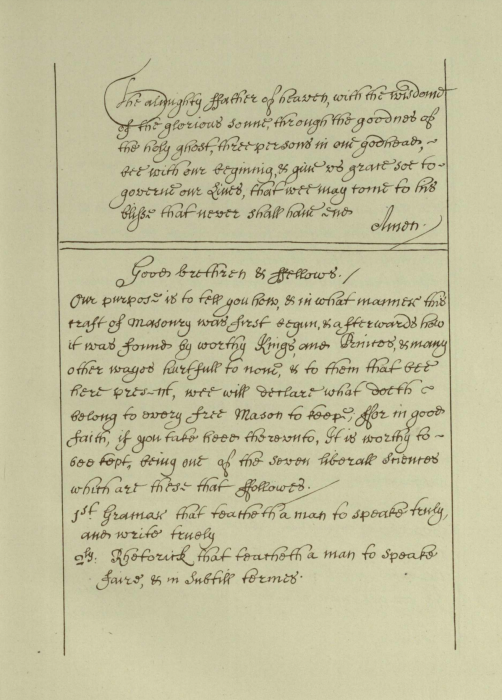
Image: Quatuor Coronatorum Antigrapha, Masonic Reprints of the Lodge Quatuor Coronati, No. 2076, London. Vol. II, Margate, 1890.
Full Text
Link to Text: Harleian MS No. 1942
Text of the Harleian MS No. 1942
https://archive.org/details/cu31924030299782/page/n81/mode/2up?q=harleian
Full Text: Harleian MS No. 2054
APPENDIX D.
HARLEIAN MS. 2054, FOL. 29.
( Copied from the original MS. in the British Museum, Nov., 1870,)
Old English Text
THE FFREE MASONS ORDERS AND CONSTITUTIONS.
The might of the father of heaven, with the wisdome of the glorious sone through the goodnease of the holy ghost that be 3 p’aons in one God, and be with ua at our begining and give us grace so to gov’ne us in our lyveing, that we may come to his blisse that nev shall have ending.
Good Bretheren and fellowes our purpose is to tell yu how and in wt manr this craft of Masonrie was begun, and afterwards founded by worthy kings and princes and many other wortt men and also to them yt be here we will declare to them the charge that doth belonge to ev’y true Mason to keepe, for in good sooth if yu take heed therunto it is well worthy to be kept, for a worthy trust? and a curious scyence, for ther be 7 severall sciences of the wch it is one : vidlt the first is Gram that teacheth a man to speake truly and to write truly : the second is Re tori eke that teacheth a man to speake fine and in subtil! terme, the third is Logique, that teacheth to diserne truth fro falshood ye fourth is Arethmaticke that teacheth to account and recount all manner of numb’s, the fift is called Geometry and it teacheth a man to meat and measure of the earth and other things, wch science is Masonrie the sixt is Musick wch teacheth songe and voice of Tongue or Organs and harpes : the seaventh is called Astrologie, wch teacheth to know the course of sun and moone and other ornamts of the heavens, the 7 liberall sciences the wch be all one science, yt is to say Geomatry ; thus may a man prove that all the sciences in the world be found by Geomatry for it teacheth to meat and me9ure ponder and waight of all manr of earth and there is no man that worketh by any craft but he worketh by some measure and waight, and all Geo : and crafts men and merchants find no other of the 7 sciences and especially plow men and tillers of all manr of ground both corne feilds, vynes plants, sellers of all fruits for grane, nether Astronomy any of all these can find a man one measure or meate wth out Geom- atry : wherfore I thinke that science most worthy that findeth all others. How this worthy science was first begun I shall tell yu. Before Noahs flood was a man called Lameth as it is written in the 4th chapt : of Genesis, and this Lameth had 2 wives the one was called Ada and the other Seala and by the 1 wife Ada he begat 2 sones the one was called Jabell and the othr Jubell ; and bv ye other wife he had one son and a daughter and these foure children found the begining of all crafta. in all the world, this .Jabell was ye elder sone and he found the craft of Geometry, and he departed flockes of sheepe and lambes in the feild, he first wrought house of stone and tree and it is noted in the chapter aforesd that his Brother Juball found Musick of songs harpe and organs, the brother of Juball found smith’s craft as of Iron and steele and their sister found waveing and these children did know that God would take vengance for sin either by fire or water wherfore they writt the sciences that were found in two pillars of stone that they might be found after the flood the one stone called Marble that canot burne with fire, the other was called Latera which canot drowne with water, our intent is to tell you truly how and in what man’r these stones were found, where these crafts were written in Groeke. Hermenes that was son to Cus and Cos was son to Shem wch was sone to Noah, the same Hermenes was afterward called Hermes, the father of wise men ; and he found out the 2 pillars of stone where the sciences were now written and taught them both and at ye making of the tower of Babilon there was the craft of Masonrie first found and made much of, and the King of Babilon wch was called Hembroth or Nembroth was a mason and loved well the craft as it is said of y« Maister of stories, and when the citty of Ninivie and other cittyes of Est Azia should be made, the Kinge of Babilon sent thither sixty masons at the desire of the King of Ninivie his cosen and when they went forth, he gave them charge in this manner, that the should be true and live togather truly and that the should serve the lord truely for there payment ; so that he might have worsp for sending them and other charg he gave them ; and this was the first tyme that any mason had eny charge of craft, moreov’ when Abraham and Sarai his wife went into Egypt there were taught the 7 sciences unto the Egyptians and he had a worthy scholler called Euchild and he learned right well and was M 1 ‘ of all the 7 sciences and it befell in his dayes that the Lords and such of the relme had so many sones that they had begotten, some by there wives and some by Ladyes of the realme (for yt land is a holy land and plenyshed generacon and they had no competent liveing foi*e there children wherefore they mad much sorrow) and the King of the land made a counsell and a pliamtto knowhow they might find there children meanes and they could find no good wayes ; and caused a cry to be made throughout the realme that if there were any man that could inform him, that he should come to him and be well rewarded and honld himselfe well payed ; and after this cry was made came this worthy clarke Euchild and sayd to the King and all his great Lords : if yu will have yr children gov’ned and taught honestly as gentlem ; should be under condicon, if yu will graunt me a commission that I may have power to rule them honestly, as these sciences ought to be ruled ; and the Kinge with his counsell graunted them and sealed that commission ; and then yt worthy doctor tooke the Lords sones and taught them this science of Geomatry in practice to worke Masonrie, all man’ of worthy workes that belongeth to building castles all maners of Lords temples and churches with all other buildings and he gave them charge in this maner : first that they should be trve to the King and to the lords they served, and that ye should love well togather and be true one to another, and that they call on another fellowes and not servants or knafes nor other foule names and that they should truly serve there paymt to there Lord that the serve and they should ordaine ye wisest to be Mr of the Lords worke, and neither for love, great liveing, nor riches to get another that hath little cuning to be Mr of the Lords worke whereby he should be evill served or they ashamed and that they should call the gov’ nor of the worke M 1 * of ye worke whilst they worke with him, and many other charges wch are too longe to tell. And to all these chargs he made them swere the grea t oath that men vsed at that tyme, and ordained for ym reasonable paymt that they might live by it honestly and also yt they should come and assemble with others, that he might have counsell iu there crafts, they might worke best to serve there Lord for there profitt and worshipp and correct themselves if they had tresspassed.
And thus the craft Geomatry was govne’d there and that worthy Mr gave it the name of Geometry, and it is called Masonrie in this land longe after : it is now amongst us in the countrey of Jerusalem, King David hegane the temple of Jeru- salem, that is with the templum dei, and same King David loved masons well and cherished them, and gave them good paymt and he gave charge that yu should hereafterwards, and after the decease of King David, Solomon that was son to David p’formed out the temple his father had begun and he sent afterwards masons of diverse lands and gathered them together so that he had fourscore thousand workers of stone and they were named masons and he had three thousand of them wch were ordained maisters and govnours : and there was a King in another region that men called Hyram and he loved well King Solomon and gave him tim- ber for his worke, and he had a son yt was named Agnon and he was Mr of Geometry and he was cheife Mr of all his masons, and Mr of all his graving workes and of all other masons that belonged to the temple and this wittnesseth the Bible in libro 2 Sam capite 5. and this sonne Solomon construed both the charges and maners, that his father had given to Masons, and this was the worthy craft of Masons conserved in the countrey of Jerusalem and in many other Kingdomes glorious craftsmen walking abroad in diverse countries, some because of learneing mor craft and other some to teach there craft ; and so it befell yt a curious mason who was named Nymus Greacus and had bine at the makeing of Solomons temple an 1 came into ffrance and there tanght the craft of Masonrie to the man of ffr.ince that was named Charles Martill he loved well this craft and drew to him this Naymus Greacus and learned of him the craft and took upon him the charge and maners and afterwards by the grace of God he was elected Kinge of ffrance and when he was in his estate he took many masons and made masons there that were non and get them in worke and gave them both charge and maners and good payment wch he had learned of other masons ami confirmed them a charter fro 7 to 7 to hold there. And thus came the craft into ffrance ; And this season was voydboth of any charge or masonrie until the tyme of St. Albns, and in this time the Kinge of England that was a pagan, and he walled the towne that is now called St. Albons, and in Albons tyme a worthy Knight was cosen stunrd to the Kinge and had govmt of the realme and alsoe of making the towne walles, and he loved Masons well and cherished them and made there payment right good stand- ing waiges as the realme did require, for he gave them ev’y weeke 3s. fid. to there double wages, before that tyme through all the land a mason tooke but a Id. a day And next to the tyme yt St. Albones mended it he gat them a charter fro the Kinge and his counsell and gave it the name of Assembly and thereat he was him- selfe and made masons and gave them charges as yu shall heare hereater. After the deacase of St. Albones there came grevious warrs into England through nations, for yt good rule of Masonrie was destroyed untyll the tyme of Kinge Athestan that was a worthy King in Engl, and he brought the land into good rest and peace againe and he building many great workes of Castles and Abbons and many other buildings and he loved masons very well, and he had a sone that was named Hadrian and he loved Masons much more then his father, for he was full of practice in Geomatry wherefore he drew himselfe to co’mance with masons and to fearne of them ye craft and afterwards for love he had to Masons and to the craft that he was made Mason himselfe, and he got of the Kinge his father a charter and a comission to hold ev’y 7 an assemble, where he would within y« realme and to correct with themselves statutes and trespasses, if it were done within the craft, and he held himselfe an assembly at Yorke and there he made masons and gave them charge and taught them maners of the masons and comanded that rule to be holden ever after and to them tooke the charter and comission to keepe and ordaine that it should be ruled fro King to Kinge when this assembly was gathered together, he caused a cry to be made yt all Masons both yonge and old that had any writting or understanding bf the charges that were made before in this land or any ofchr land that they shew them forth and there was some in french, some in greeke some in English and some in other languages and the intent thereof was found and thereof a comanded a booke to be made, how the craft was first found, and made and comanded that they should be read and tould when any Mason should be madde, and to give him his charge, and fro tyme to tyme, untill this day Masonrie hath bine kept in that forme and order, as well as might gov’ne the same and furthermore at diverse assemblies, hath bine put to and added certaine charges more by the best advises of Maisters and fellowOs.
HEBE FOLLOWETH THE WORTHY AND GODLY OATH OP MASONS.
Every man that is a mason take heed right well of this charge if yu finde yr selfe guiltie of any of these yt ye may amend yu againe, especially yu that are to be charged take good heed yt yu may keepe this charge, for it is a great p’rill for a man to foresweare himselfe on a booke.
1. — The first charge is yt yu shalbe a true man to God and ye holy church and that yu use no herisie nor errour by your understanding or teaching of dis- creet men.
2. — AlBoe y u shalbe true liege men to the Kinge without treason or falshood, and yt yu shall know no treason, but that yu amend it if you may, or else warne the kinge or his counsell thereof.
3. — Alsoe yu shalbe true one to another, that is to say to ev maister and fellowe of the craft of Masonrie that be Masons allowed and that yu doe to them as yu would they should doe to yu.
4. — Alsoe, that ev’y Mason keepe true counsell of Lodge and Chamber and all other counsell that ought to be kept by the way of Masonrie.
5. — Alsoe that no Mason’ be theife in company soe far forth as yu shall know.
6. — Alsoe that yu shall be true unto the Lord and Maister that yu serve and truely to see for his profitt and advantage.
7. — Alsoe that yu doe no uucivility in that house whereby the craft should be stayned,
These be charges in generall Wch every Mason should hold both Maisters and fellows.
Now I will rehearse other charges in singular for Maisters and fellowes.
1. — That no maister take upon him any Lords worke nor other worke hut that he knowe himselfe able and cuninge to p’forme the same, so yt the craft have noe disworshipp but yt the Lord may be served and that truly.
2. — Alsoe that noe maister take any worke, but he take reasonable, so yt ye Lord may be truely served with his owne good, and the maister to live honestly and pay his fellowes truly there pay as the manours of the craft doth require.
3. — Alsoe that noe maister nor fellowe shall subplant others of their worke, that is to say, if they have taken a worke or stand maister of a Lord’s work, yu shall not put him out of it if he be able of cuning to end the worke.
4. — Alsoe that noe maister or fellow take any apprentize to be allowed apprentize but for 7 yeares, and that the apprentize be able of his birth and limes as he ought to be.
5. – Alsoe that noe maister nor fellow take allowance to be made a mason without the assent of his fellowes, that at the least 5 or 6, and that he that shall bo made a mason to be able ov all syres* that is to say, that he be free borne and of good kindred and no bondman and yt he have his right limes as a man ought to have.
6. — Alsoe that no Maister put a Lord’s man to taske that is used to go to Journey.
7. — Alsoe that ev’y mason shall give no pay for his fellowes but as he may deserve, for that he be not deceived by false workmen.
8. — Alsoe that no fellowe within the lodge or without answer another ungodly without reasonable cause.
9. — Alsoe that noe fellowe slander other falsely behinde his backe to make him loose his good name or his worldly goods.
10. — Also ev’y Mason shall preferre his elder to put him to worshippe.
11. — Alsoe that noe Mason shall play at Hasarts or any other vnlawful game whereby they may be slandered.
12. — Alsoe that no Mason shalbe a comon Rybald in Lecherie to make the craft slandered, and that no fellowe goe into thetowne where is a lodge of fellowes without a fellow with him, that may beare him wittnesse that he was in honest company.
13. — Alsoe that ev’y Mr and fellow come to the assembly if it be within five miles about him, if he have any warning, and to stand at ye rewarde of Maisters and fellowes.
14. — Alsoe that ev’y Maister and fellow if they have trespassed shall stand at the reward of Maisters and fellowes to make them accord (if they may) but if they may not, goe to the comon law.
15. — Alsoe that noe Mason make moulds, square or rule to any rough layers.
16. — Alsoe that no Mason set noe layes within a lodge or without to have mould stones with one mould of his workeing.
17. — Alsoe when the come ov’ the countrey to sett them on worke as the maner is (that is to say) if they have mould stones in place he shall set him a fortnight in worke at the least and give him his hyre, and if there be noe stones for Him, then refresh him with some money to bring him to the next lodge.
18. — Alsoe yu shall and every mason shall serve truely the workes and trvely make an end of ye worke, be it taske or journey if yu may have yr pay as yu ought to have.
tunc unus ex senioribus teneat libru et illi vel ille teneat libru et .
• • • ( /( . tunc incip. hie jurare sodales.
These charges that we have rehearsed and all others that belongeth to Masonrie yu shall keepe to the uttermost of yr knowledge soe help you God, and by the contents of this booke.
FINIS.
Recent Articles: manuscripts
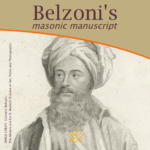 Belzoni's Masonic Manuscript is a valuable resource for anyone interested in the history and practices of Freemasonry, as well as for those interested in the broader cultural and social history of the early 19th century. The manuscript provides a rare glimpse into the inner workings of the organization, and offers insights into its beliefs, values, and practices. It is a fascinating document that continues to captivate and intrigue scholars and freemasons alike. |
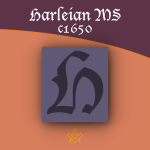 There are two known 'Harleian Manuscripts' which allude to the earliest constitutions of Masonry. |
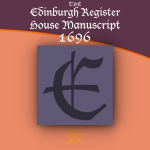 The Edinburgh Register House Manuscript (1696) At the time the manuscript was written in Edinburgh, Scotland was the home to various lodges, including those of the operative Masons of Edinburgh, it provides an interesting Masonic Catechism with questions and answers, a genuine ritual of admission. |
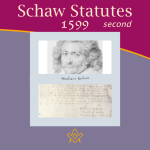 The Second William Schaw Statutes (1599) We look at a modern transcript of the second William Schaw Statutes dated 1599. An operative masons charter for stone cutters and layers in the building industry of the time. A set of rules and regulations including penalties. |
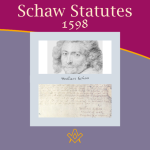 The First William Schaw Statutes (1598) We look at a modern transcript of the first William Schaw Statutes dated 1598. An operative masons charter for stone cutters and layers in the building industry of the time. |
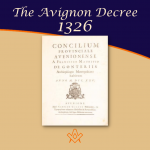 The Avignon Decree (1326) Papal Bull The several Papal declarations against Freemasons after the formation of the Grand lodge in England in 1717 are well known. The Avignon Decree (1326), published 400 years prior, is the earliest known document to set out the Catholic Church's intentions… |
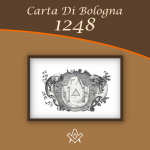 The Bologna Statutes Or Carta Di Bologna The Bologna Statutes or Carta Di Bologna 1248 - Masonic document of Operative Masonry, the oldest one found to date. |
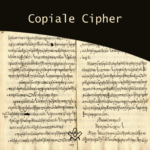 What is the connection between the Copiale Cipher and the great enlightened society of oculists ? |
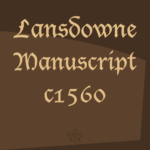 A very foolish legendary account of the origins of the Order of Freemasonry |
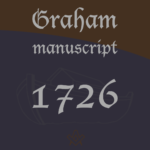 The Graham Manuscript dating from 1726 is an early Masonic document that calls upon Noah and this 3 sons in respect to Masonry, an alternative allegory to the Hiram legend. |
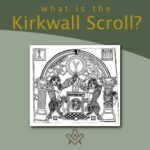 The Kirkwall Scroll is a hand-painted floor cloth depicting a myriad of symbolism |
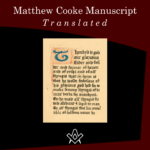 Matthew Cooke Manuscript was written c1450. A transcript of a yet older document, written by a Speculative Mason |
 Are you interested in the 'musty old documents of the past'? This article first appeared in The Builder magazine,1923 |
masonic knowledge
to be a better citizen of the world
share the square with two brothers

click image to open email app on mobile device


